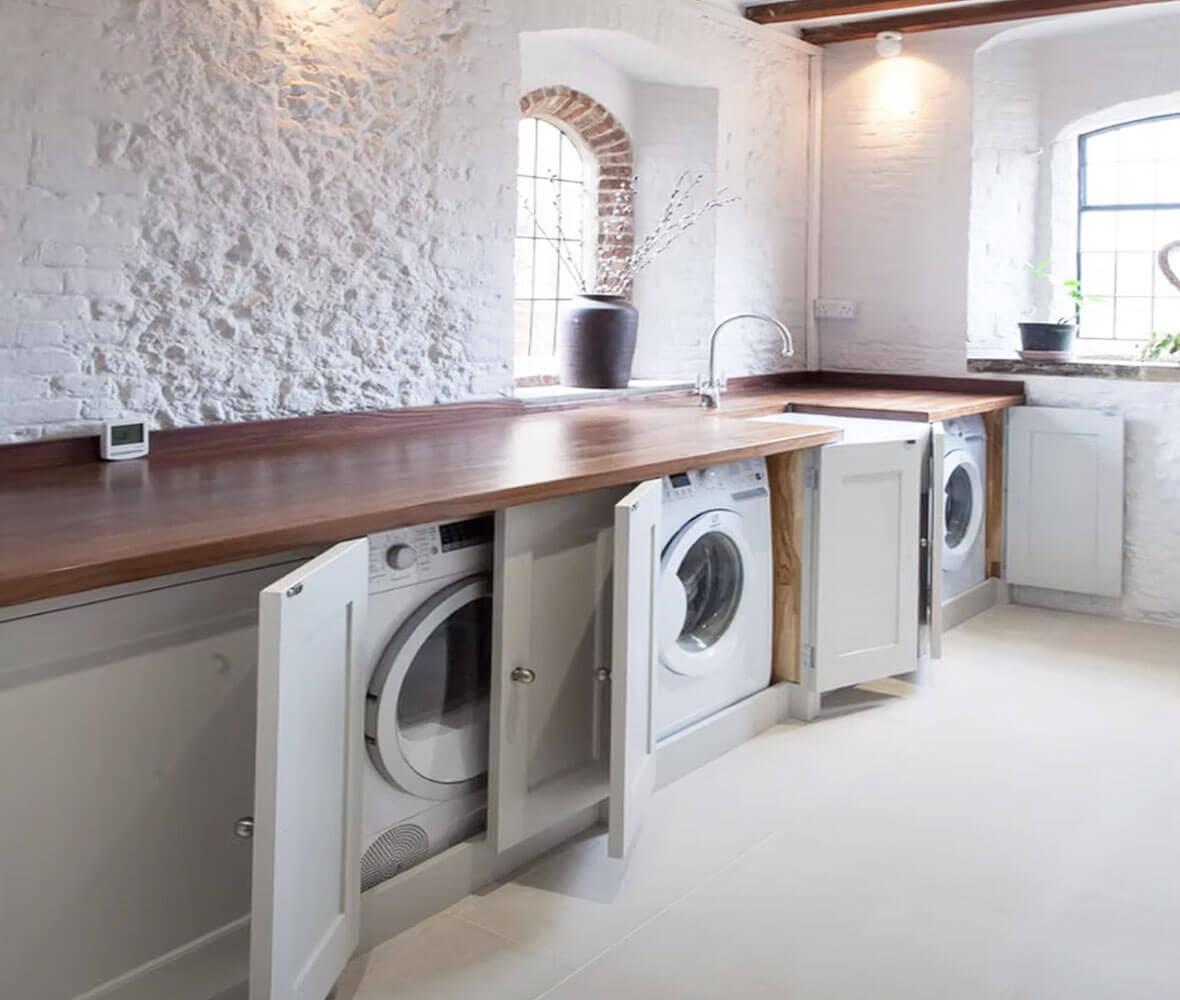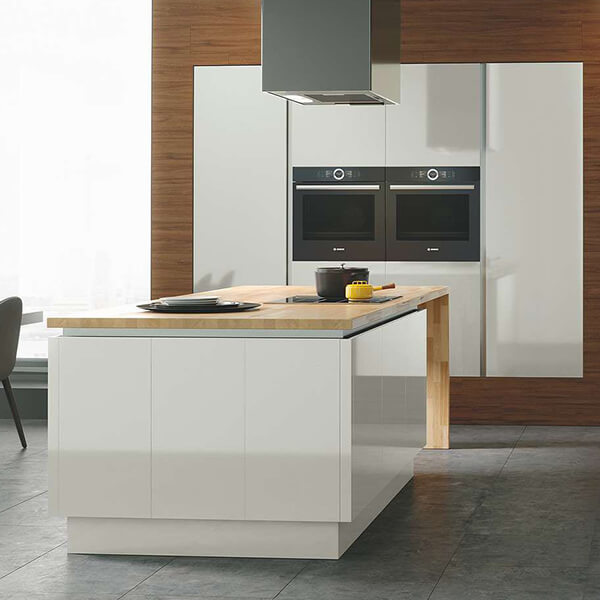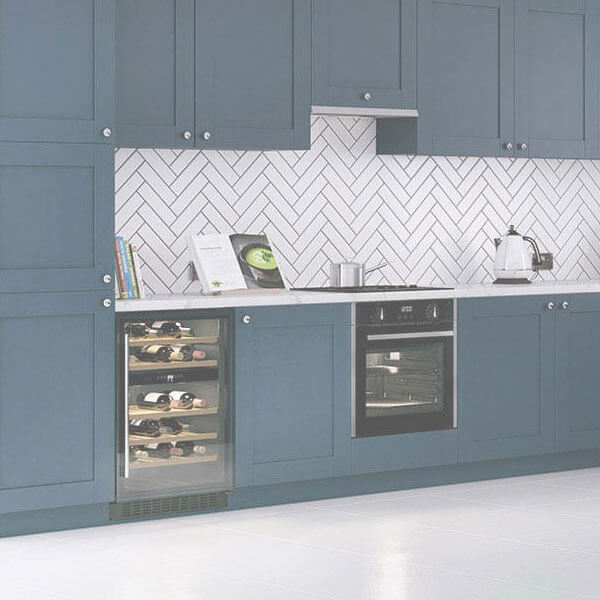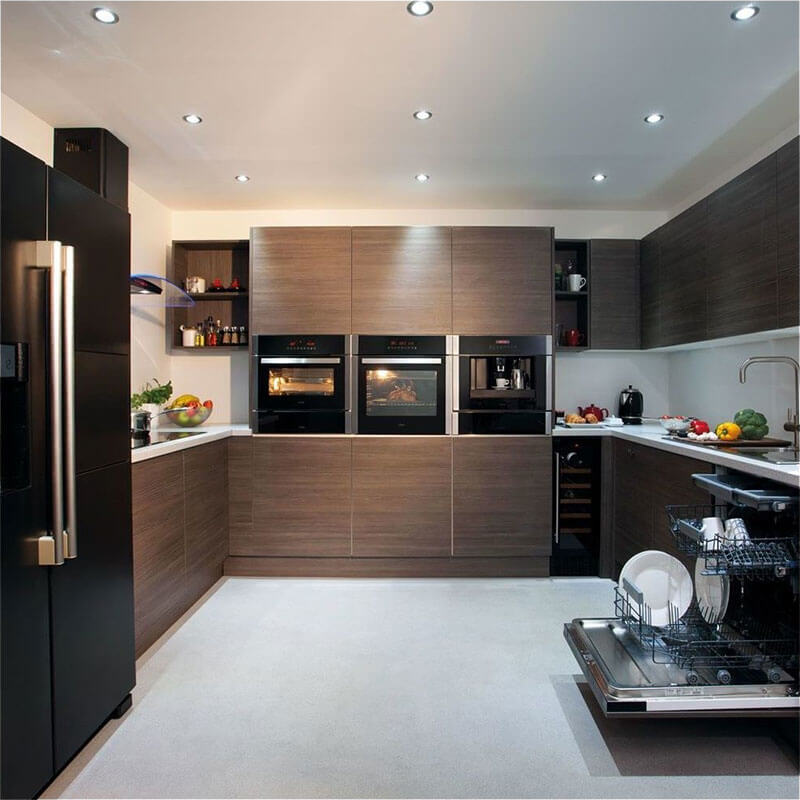Building In Free-Standing Appliances: Pros and Cons

Considering giving your kitchen a streamlined look by building in your free-standing appliances?
Our comprehensive guide covers key considerations for successfully integrating appliances into your kitchen cabinetry, from depth and ventilation to securing and maintenance.
The Quest for Cohesion in Your Kitchen Design
The allure of a seamlessly designed kitchen cannot be overstated. It’s a space that not only serves functional needs but also represents your aesthetic taste. One strategy to enhance the design cohesion in your kitchen is integrating free-standing appliances into your cabinetry.
But before you proceed, it’s vital to weigh the pros and cons and know how to do it right. With Better Kitchens, you're in the company of experts. Let’s dive in!
Depth: Measuring Twice to Fit Just Right
Standard kitchen cabinets typically range from 560-570mm in depth, while free-standing appliances may extend to 600mm or beyond. Here’s how to bridge the gap:
Option 1: Adjust your cabinet, pulling it forward to align with the appliance. Any resulting space behind the cabinet can be covered with a filler panel.
Option 2: Opt for a deeper worktop with an overhang at the front, providing the necessary clearance for the appliance.
Top Tip: Always add an extra 25-50mm behind the appliance to account for plumbing and ventilation.
Ventilation: Keeping it Cool
Ensuring ample ventilation is paramount. Blocked airflows can result in overheating and decreased efficiency.
- Leave a minimum of 75mm space between the appliance and the back wall.
- Opt for worktop overhangs or maintain a gap at the front.
- Keep space between the machine and the cabinet sides.
Top Tip: Ventilation slots or grilles can be a functional yet stylish addition to promote airflow.
Anchoring Your Appliance: No Room for Jiggles
Your appliance must be firmly secured to prevent vibrations or movements that could cause damage.
- Bolt the appliance to the cabinet sides.
- Attach the machine feet to the floor using brackets.
- Invest in anti-vibration mounts to minimise noise and vibrations.
Ease of Access: Because Maintenance is Inevitable
A built-in look is aesthetically pleasing, but what about when it's time for repairs or regular maintenance?
- Ensure service panels or filters are easily accessible.
- Opt for special hinges or removable panels for easier access.
- Make sure you can pull the appliance out without damaging the surrounding area.
Top Tip: Think long-term. You may need to access behind the appliance at some point, so plan accordingly.
Utilities: Plumbing and Electrical Connections
Utility connections require extra attention for safe and smooth operations.
- Cut precise holes in the cabinet bottom and use grommets for hoses and cables.
- Ensure the electrical cable reaches the outlet without strain.
Dealing with Condensation: Protection First
Humidity can wreak havoc on cabinetry over time. Consider these strategies:
- Use moisture-resistant finishes.
- Install a small vent fan inside the cabinet.
- Apply condensation-absorbing materials internally.
Weighing Your Options: The Pros and Cons of Building In Free-Standing Appliances
A succinct table to guide you through the advantages and drawbacks of integrating your free-standing kitchen appliances into your cabinetry. Perfect for those contemplating a kitchen remodel or design.
| Aspect | Pros | Cons |
|---|---|---|
| Design & Aesthetic | Creates a sleek, integrated look. | Alignment and spacing must be meticulous for a seamless appearance. |
| Space Utilisation | Effective use of space, enhancing the room’s flow. | Extra space behind or in front may be needed, affecting overall kitchen layout. |
| Ventilation | Can be managed with thoughtful design, like adding grilles. | Risk of poor ventilation, which can lead to overheating or reduced efficiency. |
| Accessibility | Everything fits in one seamless unit, making the kitchen easier to navigate. | Maintenance and repairs can be more complicated due to restricted access. |
| Cost | Utilises existing appliances, potentially saving money. | Special materials and professionals may be needed, adding to the expense. |
| Utility Connections | Customisable based on your needs. | Requires extra planning for electrical and plumbing, possibly needing professional services. |
| Condensation Management | Can be controlled with proper finishes and vent fans. | Risk of condensation, which can damage cabinets over time if not managed well. |
Now that you've had a glance at the pros and cons of integrating free-standing appliances into your kitchen, you may have some additional questions. From ventilation to design aesthetics, several nuances might need further explanation. Let's delve into the Frequently Asked Questions (FAQs) to address these queries and help you make an educated decision for your kitchen project.
FAQs: Your Questions, Answered
In this Frequently Asked Questions (FAQs) section, we aim to answer your most pressing questions about integrating free-standing appliances into your kitchen cabinetry. Whether you're concerned about ventilation, cost, or maintenance, our expert guidance is here to put your mind at ease and steer your kitchen design project in the right direction.
How much extra depth do I need for a built-in free-standing appliance?
When building in a free-standing appliance, it is recommended to allow an extra 25-75mm for pipes, cables, and ventilation.
How can I ensure proper ventilation?
Leave gaps around the machine and consider adding ventilation slots or grilles.
Is it crucial to secure the appliance?
Absolutely. An unsecured appliance can move and cause damage.
What should I consider for maintenance access?
Plan for easily accessible service panels and consider special hinges.
How should I handle plumbing and electrical connections?
Precise holes and grommets are key, along with a long enough power cable.
How can I minimise condensation?
Use moisture-resistant finishes and consider installing a vent fan.
Can I use any cabinet to enclose my appliance?
Cabinets should be sturdy enough to support the appliance and meet the required dimensions.
Can I do the installation myself?
While DIY is possible, professional help is recommended for plumbing and electrical work.
Conclusion
Integrating free-standing appliances can lend your kitchen a sleek and seamless appeal, but it’s not a venture to be taken lightly. With detailed planning around depth, ventilation, secure anchoring, maintenance access, and condensation prevention, you can achieve a look that is not only cohesive but also functional.
Ready to take your kitchen design to the next level? Visit Better Kitchens for premium quality, affordable solutions. Your dream kitchen is just a click away!







